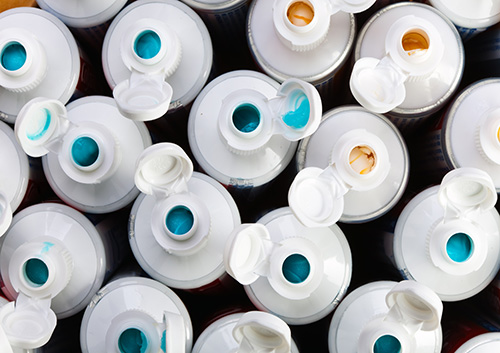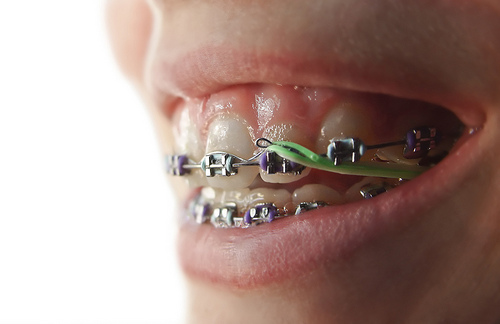July 20th, 2016

Between the huge number of toothpaste brands on the market today, the different flavors, and claims from most to do different things, it isn’t surprising that people feel so confused when it comes to something that should be as simple as buying a tube of toothpaste. This guide will help you identify the common ingredients in toothpaste, and help you understand the important factors to consider before buying toothpaste again.
Toothpaste comes in gel, paste, and powdered forms. When it comes to the type of toothpaste, the choice is more a matter of preference.
Basic Ingredients
- Abrasive Agents – Abrasive agents are the scratchy substances added to toothpastes to help in the removal of food particles, bacteria, and minor stains. Calcium carbonate is one of many abrasive materials, and arguably the most common.
- Flavor – When toothpastes are flavored, they almost always have artificial sweeteners to enhance the flavor of the toothpaste and increase the likelihood that you’ll use it. Flavors run the gamut from traditional mint to cinnamon that may appeal to adults, and bubble gum or lemon lime – flavors to target children.
- Humectants – Humectants are moisturizing agents that keep paste and gel toothpastes from drying out. Glycerol is commonly used as a humectant.
- Thickeners – Thickeners are used to give toothpaste its distinctive consistency, and to make it maintain a uniform consistency and come out of the tube easily.
- Detergents – Sodium lauryl sulfate is the most common detergent used in products that foam up, like toothpaste does in your mouth.
What to Look For in Toothpaste
Fluoride is naturally occurring mineral. It is the most important ingredient to look for in a toothpaste. Although there are people who argue against using fluoride toothpaste, dental professionals like Dr. Kathleen Tavarez emphasize that the fact that the incidence of tooth decay has decreased so significantly in the past 50 years is because of fluoridated toothpaste.
The suggestion that fluoridated water gives you enough fluoride to protect your teeth is wrong. Fluoride toothpaste is the best cavity protection there is. In addition to strengthening tooth enamel and protecting teeth from acid erosion (from acidic foods and drinks,) it remineralizes the surfaces of teeth that are suffering from early acid damage and may prevent developing tooth decay from worsening.
Tartar Control
Tartar is the result of hardened plaque buildup on the teeth. Good oral hygiene and in between twice yearly cleanings from a dental hygienist are the best defense against plaque buildup. Plaque turns to tartar when people neglect their oral hygiene. Over time, tartar can build up on teeth and under the gums, increasing the risk of gum disease.
Your best bet is to use a toothpaste that has a combination of anti-plaque agents. Products containing more than one plaque reducer may be more effective than products that only one. Common ingredients to look for are zinc citrate or pyrophosphates. Triclosan is an antibiotic that is believed to kill bacteria in the mouth, and it can be found in some anti-plaque toothpaste.
Look for toothpaste that bears the seal of the American Dental Association. That seal is an endorsement of the ADA – and it means that many dentists agree that that particular toothpaste does what toothpaste is designed to do. We can also recommend toothpaste to meet your specific oral health concerns at your next visit to our Menlo Park or San Carlos, CA office.
July 13th, 2016

Our team at Tavarez Orthodontics knows that there are many ways you can protect your pearly whites throughout your orthodontic treatment. If you follow the rules and brush your teeth twice a day, floss often, and protect your appliances from damage, you should have a successful treatment.
But did you know there’s another way to keep your teeth sparkling and healthy during your time wearing braces?
Fluoride, the mineral that helps you prevent cavities and tooth decay, can also help keep your teeth strong. Fluoride comes in two varieties: topical and systemic. Depending on your oral health or the recommendation of Dr. Kathleen Tavarez, you may be required to have a fluoride treatment every three, six, or 12 months. We may also prescribe a fluoride product such as a mouthwash, gel, or antibacterial rinse for at-home treatment to keep your teeth happy in between visits.
If you have any other questions about fluoride or your treatment, please don’t hesitate to give us a call!
July 6th, 2016

We’ve heard all the reasons why folks put off scheduling an orthodontic consultation: not quite ready to begin treatment, vacations, busy schedules, financial concerns, etc.
Here are five reasons why you shouldn’t delay another day to make an appointment for yourself or your child with Dr. Kathleen Tavarez.
1. Growth – there is a window of opportunity during growth when an orthopedic appliance can change the direction of jaw growth and dramatically improve your child’s case. Once this time has passed, the correction becomes harder and may involve extraction of teeth or even worse, a surgical procedure to properly align the jaws.
2. Scheduling – Summertime is the perfect time to begin orthodontic treatment, because your child doesn’t have to miss school, especially for those longer appointments needed at the start of treatment.
3. Early Diagnosis – Many times, early interceptive treatment at Tavarez Orthodontics can dramatically improve the alignment of your child’s teeth and jaws. If baby teeth need to be extracted in order to allow the permanent teeth to erupt, timing is everything. The American Association of Orthodontists recommends that children receive an orthodontic consultation as early as age seven.
4. Financial Concerns – We offer several flexible payment plans which can be extended over your or your child’s treatment time.
5. A Lifetime of Smiles – Why wait when you can enjoy the many benefits of a beautiful and functional smile now. The sooner you get started the sooner you will be showing everyone your world-class smile.
Give us a call at our convenient Menlo Park or San Carlos, CA office to book your initial consulation with Dr. Kathleen Tavarez.
June 29th, 2016

Most of our patients at Tavarez Orthodontics will need to wear rubber bands at some point during their orthodontic treatment. The main reason our patients are instructed to wear rubber bands is to correct their bite. If your teeth do not fit together properly, Dr. Kathleen Tavarez will recommend that rubber bands be used. Dr. Kathleen Tavarez may also recommend using rubber bands to close or open spaces.
Rubber bands are a critical part of your treatment, and wearing them as Dr. Kathleen Tavarez and our team recommend will help move your teeth into the desired position. Dr. Kathleen Tavarez may ask you to wear your rubber bands full time, meaning that they should only be taken out when you brush and floss your teeth three times a day. Other times, you may be asked to only wear them part-time, like only during the day or only during sleep.
If you still have any questions about orthodontic rubber bands, we invite you to give us a call or ask us during your next adjustment appointment. Remember, wearing rubber bands as prescribed by Dr. Kathleen Tavarez is an important step during your treatment, and can reduce the time you have your braces. If you lose your rubber bands or run out, stop by our Menlo Park or San Carlos, CA office and pick up more!











 Website Powered by Sesame 24-7™
Website Powered by Sesame 24-7™